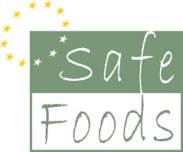3. Emerging Risks and Case Studies
The definition of “emerging” applies to the following categories of risks:
- Risks that have previously happened and later diminished , but that are now re-occurring. The are in fact “re-emerging” risks. Example: foodborne pathogens, such as Salmonella
- Risks that were previously unknown , but that we have become aware of thanks to the progress in science and knowledge. Example: re-evaluation by EFSA of food colouring agent Red 2G
- Risks that were previously not present within foods in general, or in a particular type of food, and that have started to emerge in the products. Example: Sudan Red Dye
- Risks related to compounds that were previously present in foods , but to which the exposure of consumers increased to such extent that they have become a risk. Example: Acrylamide
It is possible that the term “hazard” would be a better description of an emerging risk in an early stage of development instead of “risk”. According to the Codex Alimentarius definitions, a hazard is an agent with the potential to cause an adverse health effect.
Within the area of food safety, consumers and producers may face various hazards that are of widely diverse nature, including: chemical, microbiological and physical agents, such as glass splinters. In this overview only microbial and chemical risks will be mentioned.
